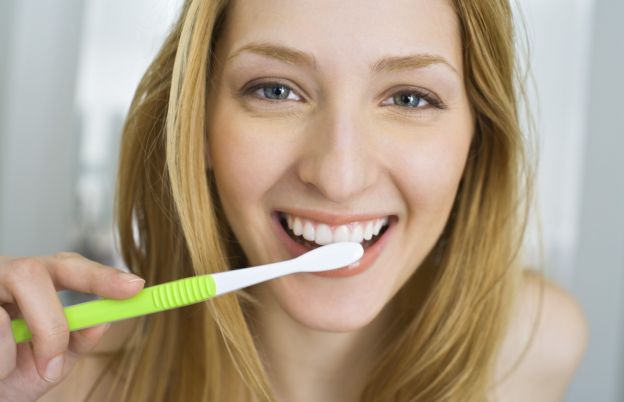LET’S TALK ABOUT PLAQUE
It’s a common-known fact that drinking beverages such as coffee and red wine can lead to stains on your teeth. Years of letting this problem go unchecked can do serious damage to your teeth – so how can you avoid it?
The good news is: you don’t have to stop enjoying these drinks to make a difference. The two main factors that cause stains are how much you drink and, surprisingly, how much plaque buildup you have on your teeth. Plaque is a colorless film made up of saliva, food particles, and bacteria, and it’s completely normal for this to develop on your teeth throughout the day. The problem is that plaque also absorbs pigments, which results in staining.
So what should you do?

BRUSH BETTER, NOT MORE OFTEN
If dealt with early enough, plaque can be eliminated with thorough brushing. This eliminates both the stains absorbed and the plaque itself, which if left untreated can harden and turn into a much more serious dental problem.
However, frequent brushing alone isn’t going to solve your problem. Instead, you need to make sure you’re brushing well. Most experts agree that it’s only really necessary to brush around two times per day, but those sessions can’t be rushed. At least one of those per day should last for two minutes, to make sure you clean off all the plaque and buildup.

AVOID SUGARY ADD-INS
Contrary to what many people think, it’s not just the black coffee itself that causes the stains. Anything added into the drink that has a high sugar content – sugar, syrups, milk – encourages bacteria to stick around on your teeth, therefore amping up the plaque buildup. The more plaque on your teeth, the more pigmented substances will be absorbed and stick to your teeth.

CARRY MOUTHWASH
You don’t have to go so far as to keep a toothbrush in your handbag, but a bit of mouthwash could come in handy. Since plaque is created by bacteria, food, and saliva, taking a swig of mouthwash after a meal is a great way of rinsing off the leftover bits before they can settle and stain.
Keep a small bottle of mouthwash at work, in your bag, or wherever is convenient and use it after lunch or after you’ve had your daily cuppa (or two). Then when you get home in the evening, you can take the time to brush your teeth thoroughly and get rid of anything left over.

SWITCH TO AN ELECTRIC TOOTHBRUSH
Even the best tooth-brushers among us have a hard time competing with an electric toothbrush. They are more efficient, better at cleaning and as most of them have inbuilt pressure sensors, better for your gums too. You don’t have to spend a lot of money on the fanciest option on the market; just opt for a reputable brand or model and give it a try. You might find it hard to ever go back!

USE WHITENING PRODUCTS
When all else fails, white strips and toothpastes with whitening ingredients are an effective option. These have proven track records of getting you results and fast, thanks to their hydrogen peroxide ingredients, but the drawback to these is that they are temporary. If you continue to neglect your teeth and ignore the previous tips, they won’t stay pearly white forever.
Whatever you do, the best option is always to take preventive measures before the problem gets out of hand and establish healthy habits to keep your teeth bright and clean.
And, thankfully, you can do all that without ever having to sacrifice your beloved cappuccino or bottle of Bordeaux!












